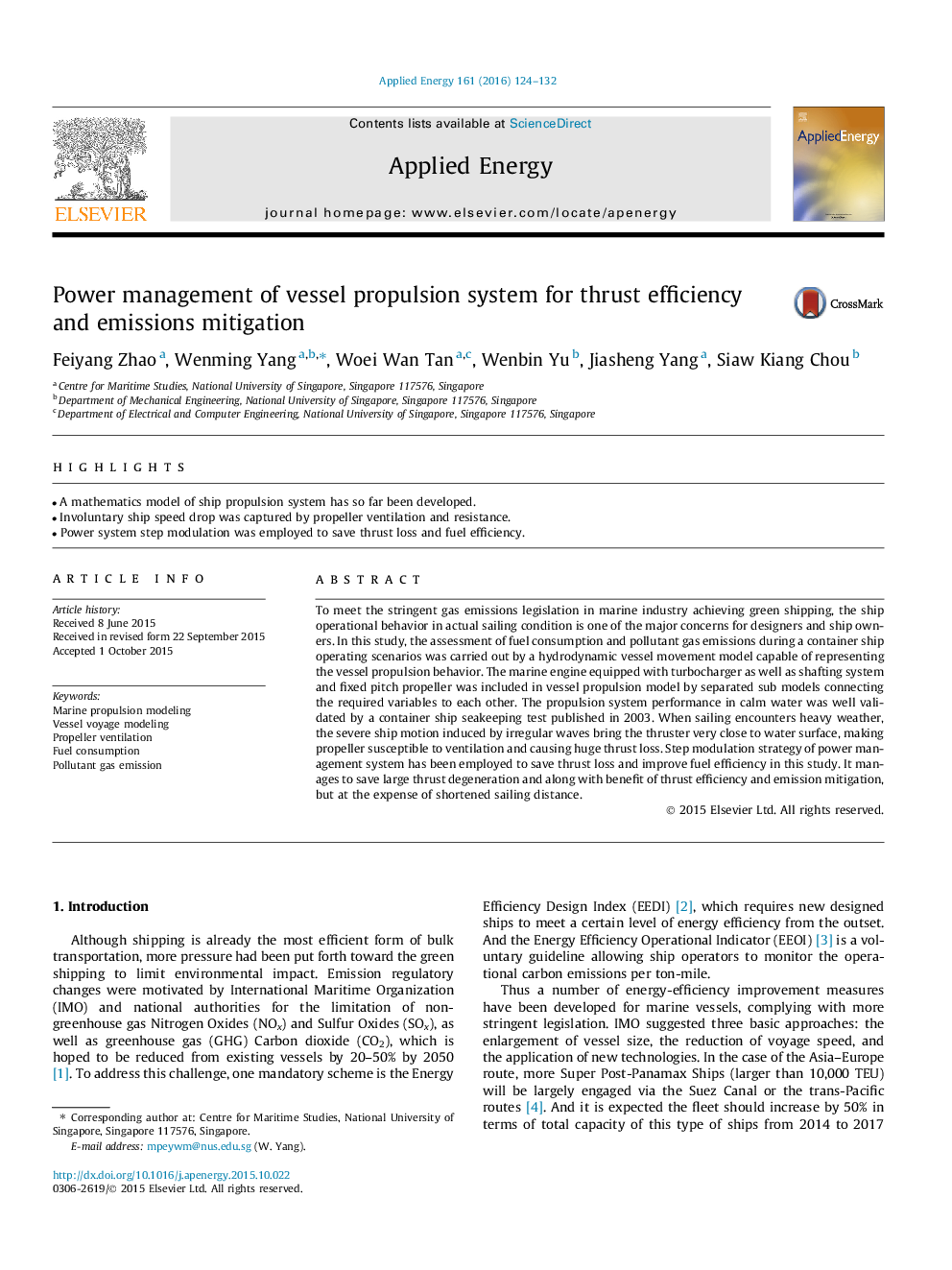| Article ID | Journal | Published Year | Pages | File Type |
|---|---|---|---|---|
| 6684944 | Applied Energy | 2016 | 9 Pages |
Abstract
To meet the stringent gas emissions legislation in marine industry achieving green shipping, the ship operational behavior in actual sailing condition is one of the major concerns for designers and ship owners. In this study, the assessment of fuel consumption and pollutant gas emissions during a container ship operating scenarios was carried out by a hydrodynamic vessel movement model capable of representing the vessel propulsion behavior. The marine engine equipped with turbocharger as well as shafting system and fixed pitch propeller was included in vessel propulsion model by separated sub models connecting the required variables to each other. The propulsion system performance in calm water was well validated by a container ship seakeeping test published in 2003. When sailing encounters heavy weather, the severe ship motion induced by irregular waves bring the thruster very close to water surface, making propeller susceptible to ventilation and causing huge thrust loss. Step modulation strategy of power management system has been employed to save thrust loss and improve fuel efficiency in this study. It manages to save large thrust degeneration and along with benefit of thrust efficiency and emission mitigation, but at the expense of shortened sailing distance.
Keywords
Related Topics
Physical Sciences and Engineering
Energy
Energy Engineering and Power Technology
Authors
Feiyang Zhao, Wenming Yang, Woei Wan Tan, Wenbin Yu, Jiasheng Yang, Siaw Kiang Chou,
